Ligo
Latest
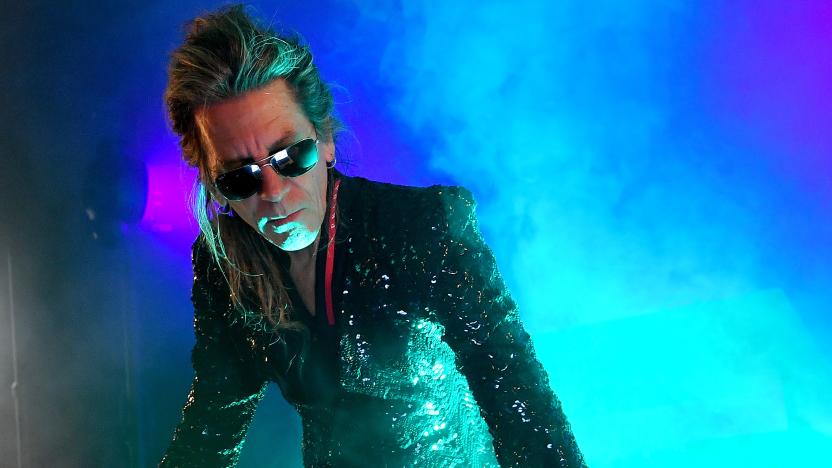
William Basinski looks back on ‘Disintegration Loops’ and dying media
A new documentary at SXSW explores the composer's serendipitous ode to uncertainty.
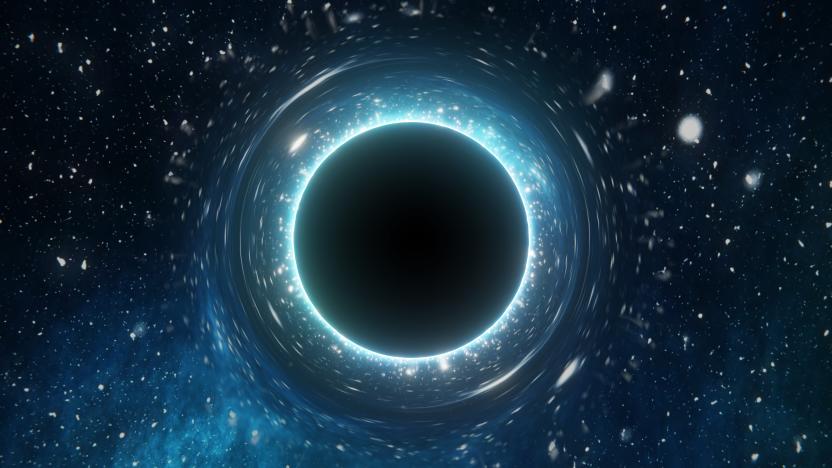
Astronomers spot a super-rare class of black hole for the first time
“We were able to confirm that this came from a collision of two black holes,” Jani said. The individual black holes weighed roughly 85 and 65 times the mass of the sun, respectively.
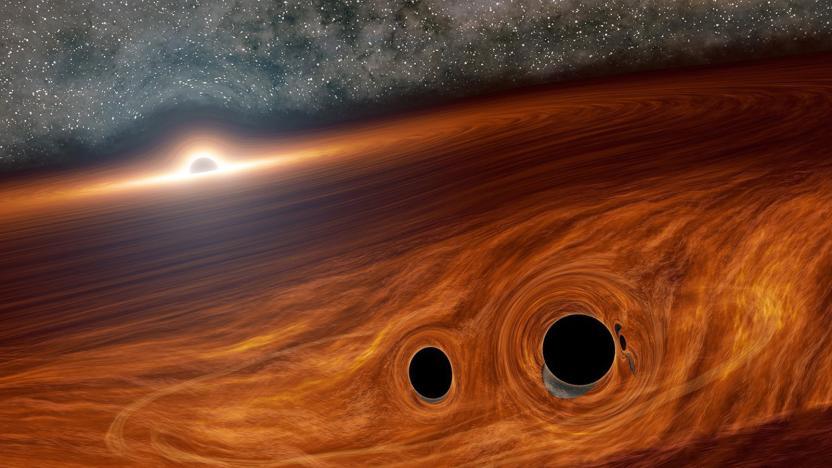
Astronomers may have spotted light from colliding black holes
Astronomers believe they've seen the first known light resulting from colliding black holes.
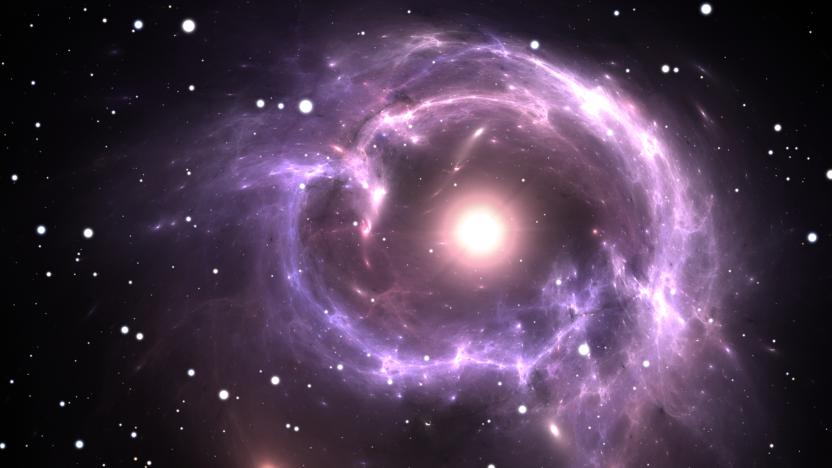
Astronomers are puzzled by a mysterious dead star
Physicists aren't sure if they've found the heaviest neutron star or the lightest black hole.

Astronomers just measured a whole lot more than gravitational waves
A couple of weeks ago, the LIGO (Laser Interferometer Gravitational-Wave Observatory) and Virgo teams announced the detection of another set of gravitational waves -- the fourth since LIGO's first detection in September of 2015. The observations of these ripples in spacetime are extraordinary in and of themselves, no matter how many times we record them. However, while the first three sets of gravitational waves recorded were by the two LIGO observatories, the fourth was also detected by a newly established third -- Virgo -- located in Italy. And having three detectors allows researchers to triangulate the source of those waves with extraordinary precision.

Nobel Prize for Physics awarded to gravitational wave scientists
The 2017 winners of the Nobel Prize for Physics were announced today. One half of the prize will go to Ranier Weiss from MIT, while the other half is being awarded jointly to Barry C. Barish and Kip S. Thorne, both from Caltech. The three scientists worked on gravitational wave observation, collaborating between the Laser Interferometer Gravitational-Wave Observatory (LIGO) and Virgo, its European counterpart. The prize was awarded "for decisive contributions to the LIGO detector and the observation of gravitational waves," according to the Nobel Prize website.

Scientists record a fourth set of gravitational waves
Last year, researchers confirmed the existence of gravitational waves with two Laser Interferometer Gravitational-wave Observatory (LIGO) detectors. Shortly thereafter, they detected two additional gravitational wave-causing events that sent ripples through the universe. Well, we can now add a fourth to that list, as astronomers announced another set of waves. And for the first time, they observed the waves with a third detector -- the Italy-based Virgo.
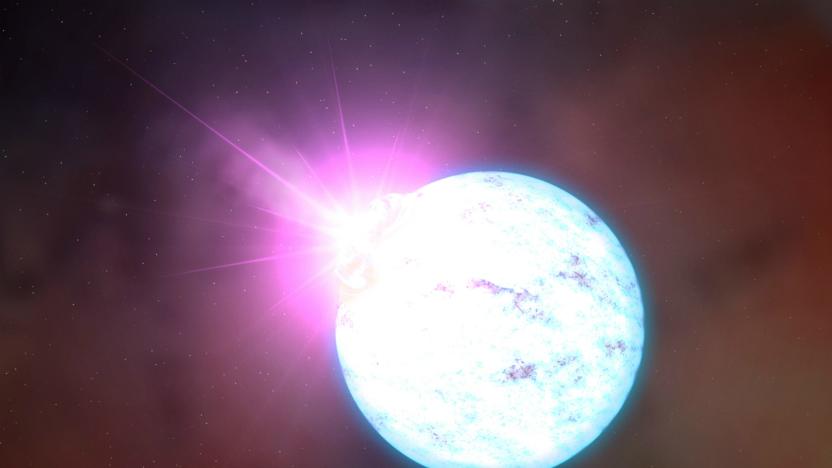
New computer models could direct scientists to epic cosmic events
Now that they're spotting gravitational waves more often, scientists are expanding their search for cosmic events. Specifically, they're using new computer models to depict the cataclysmic collision that occurs when a black hole joins a neutron star (the remnants of an exploded star). The simulations will help detectors track down the actual mergers using telescopes and advanced versions of LIGO (the Laser Interferometer Gravitational-Wave Observatory).
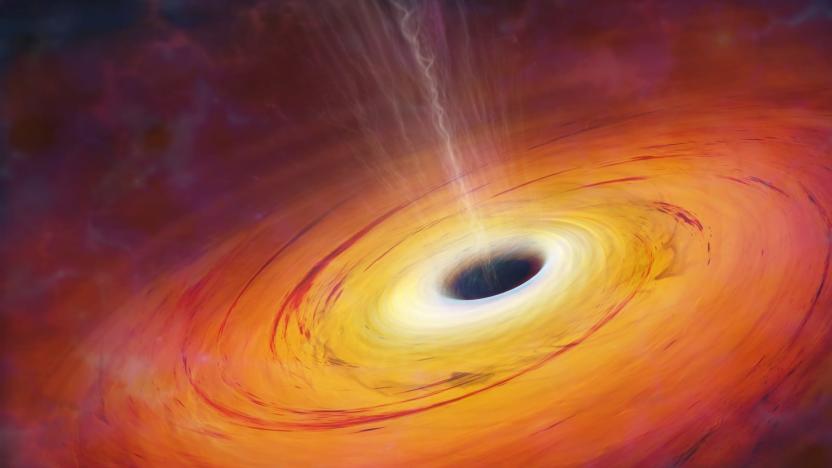
LIGO astronomers detect third black hole collision
Today, astronomers announced that LIGO has detected gravitational waves for the third time. As a result, scientists now may have new insights into how black holes are formed. Gravitational waves are ripples in the spacetime that travel at the speed of light. They're emitted as a result of black hole collisions, which produce incredible amounts of power. They had long been predicted by Albert Einstein's general theory of relativity, but it wasn't until September 2015 that LIGO's (the Laser Inferometer Gravitational-Wave Observatory) first direct observation occurred. A second detection quickly followed in December 2015. This third observation happened on January 4, 2017, and it's the furthest one yet, at 3 billion light years away. (The first two were around 1.3–1.4 billion light years away).

Caltech fires up LIGO to hunt for more gravitational waves
Nearly a year after LIGO, the Laser Interferometer Gravitational-wave Observatory, made physics history this past February, Caltech researchers have finally finished upgrading its capabilities and are ready to resume their hunt for gravitational waves. The system transitioned from experimental runs to regular operations on Wednesday morning, November 30th.

Physicists create a 'quantum ruler' to measure the universe
A group of physicists from the Russian Quantum Center and the Moscow Institute of Physics and Technology have come up with a new method of creating a special entangled quantum state, one that could be used as "a high-precision ruler" for measuring large distances with subatomic precision. The technique, described in a new study in the journal Nature Communications, could be used to increase the sensitivity of optical interferometers like the ones used by the LIGO project to detect gravitational waves.

Computer simulations point to the source of gravitational waves
Since the first gravitational waves were successfully detected last September by the earthbound Laser Interferometer Gravitational-Wave Observatory (LIGO), scientists have wondered what made them. Today, researchers from the University of Warsaw published a theory suggesting that they were likely created by the collision of two black holes, which had been stars that formed 12 billion years ago.

The After Math: FIRST!
Now that presumptive Republican nominee Donald Trump has come right out and declared "America First", a popular slogan among white nationalists throughout the country, here's a look at some of the other precedent-setting events of the week. Microsoft announced that it's getting into the legal weed game. Regulators have been presented with a proposal for the first US-based human CRISPR experiment. And Broadway announced that it will take the unprecedented step of livestream a musical. Numbers, because how else will we know how unpopular the presidential candidates are?

The first gravitational wave discovery wasn't a fluke
If you were worried that the first confirmed detection of gravitational waves was just a one-off result... don't be. Researchers analyzing LIGO data have verified a second instance (recorded in December 2015) where two black holes merged and produced the hard-to-spot behavior. The circumstances are decidedly different this time around, though. Ars Technica observes that the black holes were much smaller than those in the first instance, and spent more time on their collision course. While that offered more data to collect, the reduced intensity also introduced more errors -- it was harder to determine the masses of these holes.
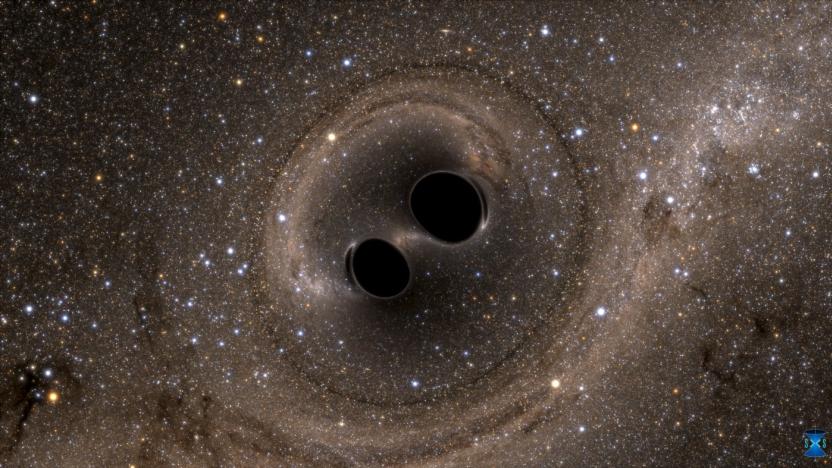
Dark matter might be made of black holes
So just what is dark matter made of? Astronomer Alexander Kashlinsky of the NASA Goddard Space Flight Center in Maryland thinks the mysterious cosmic stuff could be made of black holes that formed soon after the Big Bang.

'Goopy' dark matter could offer a new vision of the early universe
Cosmologists exploring the origins of the universe have a new theory about how dark matter behaves. Although the stuff makes up 80 percent of the matter in the universe, we don't really have a good sense of what dark matter is actually made of. According to The New Scientist, however, UT Austin professor Paul Shapiro and graduate student Bouha Li believe dark matter could be made up of bosons that clump together in "a strange, goopy state of matter called Bose-Einstein condensate."
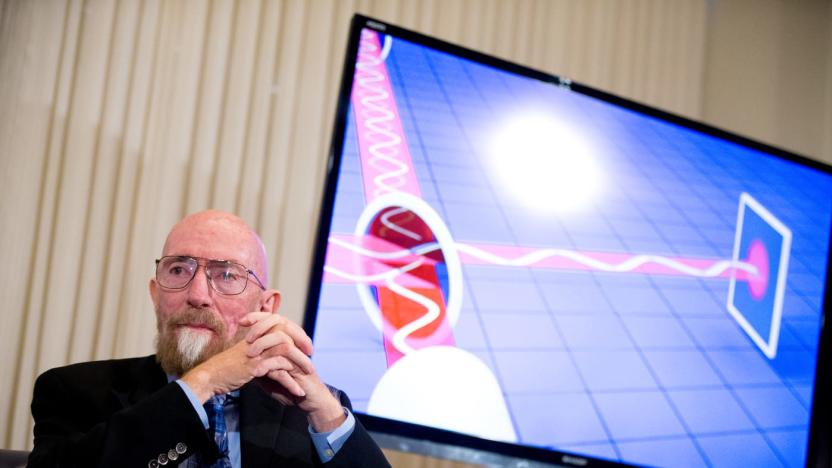
LIGO team wins $3 million prize for gravitational wave discovery
The team of scientists and engineers who confirmed the existence of gravitational waves earlier this year have just nabbed a handsome $3 million reward as part of a special Breakthrough Prize in Fundamental Physics.

Astronomers are using pulsars to spot gravitational waves
Earlier this month scientists detected gravitational waves, but it wasn't easy. Because of the tiny forces involved, it took us nearly 100 years to confirm Einstein's original prediction that ultra-massive objects like black holes could send ripples across space-time. A team of astronomers from a group called NANOGrav thinks it can use stable pulsar signals to track tiny movements in the Earth when it's jostled by gravitational waves. "Detecting this signal is possible if we are able to monitor a sufficiently large number of pulsars spread across the sky," says Stephen Taylor from NASA's Jet Propulsion Laboratory. "The smoking gun will be seeing the same pattern of deviations in all of them."

Inhabitat's Week in Green: Tesla's most affordable EV, and more!
Tesla just announced plans to launch its most affordable electric car next month. The Model 3 is expected to cost $35,000 and is set to debut on March 31st -- but it already has competition. Chevrolet showcased the Bolt EV at the start of the year, and Volkswagen confirmed that it's working on the world's first mass-market electric car. Meanwhile, Google is developing electric cars that drive themselves, and soon they'll be able to charge wirelessly. In aviation news, Easyjet announced plans to trial the first hybrid hydrogen plane, and Elon Musk is considering building a vertical take-off and landing electric jet.

ICYMI: Ripples in Spacetime, brain jolts to learn and more
#fivemin-widget-blogsmith-image-917098{display:none;} .cke_show_borders #fivemin-widget-blogsmith-image-917098, #postcontentcontainer #fivemin-widget-blogsmith-image-917098{width:570px;display:block;} try{document.getElementById("fivemin-widget-blogsmith-image-917098").style.display="none";}catch(e){}Today on In Case You Missed It: Researchers at the Laser Interferometer Gravitational-Wave Observatory confirmed Einstein's theory that ripples in the fabric of spacetime do, in fact, exist. They spotted the gravitational waves made when two black holes collided.










